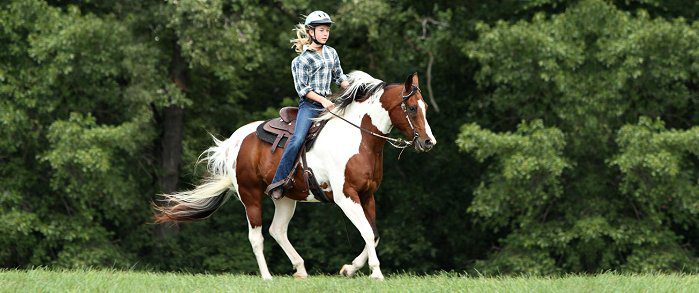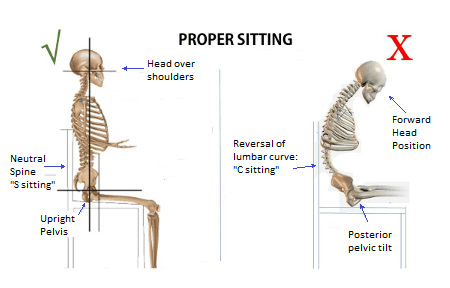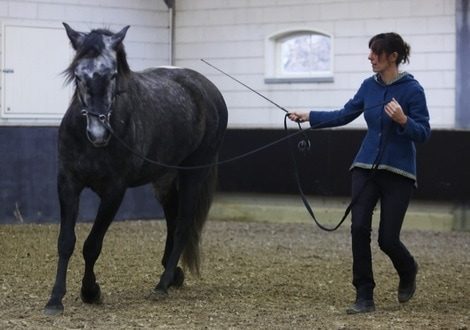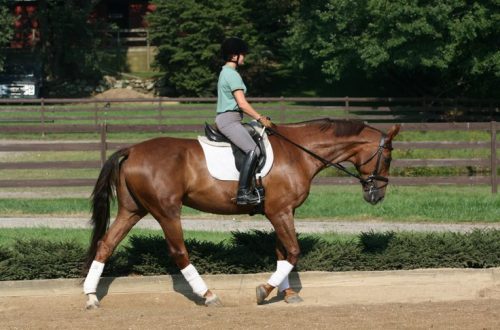
Horse Problems: A Hard Mouth is a Different Approach
Horse Problems: A Hard Mouth is a Different Approach
As a rule, a horse is said to be “tight-skinned” when it has formed calluses at the corners of the mouth or “dead zones” on the edentulous edge – nerve endings are damaged. The more calluses or dead spots, the more pain the horse can take and the harder you have to work the reins to get the response you expect.
However, there is another side of the coin. Many hard-nosed horses still have nerve endings. In fact, the horse hangs on his hands, making it difficult to turn and stop. This is due to the animal’s negative experience (current or previous) with the use of a bit that is too strict or with the rider “hanging” on the horse’s teeth.
In an effort to get the horse to “pay attention” and “react”, too many riders opt for more and more severe bits. In an effort to avoid pain, the horse enslaves the back of the head, jaw, neck and entire front. The moment she expects the reins to be pulled, she tenses up, anticipating the discomfort to come. Even if you change the rider or the bit, the horse will remain with an already formed “set” of reactions, both physical and psychological.
What do we see? The rider is constantly trying to forcefully stop the horse running out from under him, walking on the front with his head and neck stretched forward … At the same time a horse that either turns hard forehand or (worse still) actually turns but keeps its head turned in the opposite direction of the turn is unbalanced and can even be dangerous.
What to do?
Most hard-nosed horses need to be taught how to yield to pressure and how to be flexible in both lateral and vertical bends. Her habitual rigidity must be reduced, her body and mind must become flexible.
The horse must be brought back and re-taught stops and how to bend his body, starting with the head and neck.
Retraining begins on the ground in a round barrel and moves towards work under the village in the arena or on the parade ground. We start with a walk and end when the horse becomes supple and compliant during turns and stops even at a canter. Eventually the horse will become responsive, relaxed, reliable and a pleasure to ride.
How long this takes depends on how long the horse has been suffering from bad bits and/or illiterate riders, and how often and consistently he trains the “new way”. We will consider the retraining needs of the horse, but not the retraining needs of the rider. (It is possible that the rider will also need to get advice from a professional who can help him balance in the saddle, not cling to the horse with his feet, not hold on to the reins).
On the ground, in a round barrel:
To retrain a horse, you need all the controls—verbal cues to stop him, seat pressure to stop, and a reason to stop.
Start by teaching the verbal “stop” command from the ground, using it while lunging and also while you are leading the horse in your hands.
Under saddle in a round barrel
As you practice on the ground, mount your horse to work on the stop command using your seat and reins.
What snaffle to use?
The principle “the softer the better” will apply here. You are in a perfectly controlled area of the barrel. You can even remove the regular bit and replace it with a side pool or rope halter with rein rings. In this case, you will not have any chance of problems with your mouth at all. And even with a horse running ahead and carrying a horse in a barrel, you will remain safe.
Cross the barrel by driving from one side to the other. About 3/4 of the way, sit in the saddle with your sit bones deeper, say “stop” (or whatever command you want to use later), wait 1 second and pull the reins backuntil the horse stops. When he stops (if he doesn’t, he will hit the fence), immediately relax your posture and reins and let your horse rest. Repeat.
When you have done enough reps and the horse begins to slow down in response to the seat signal before you even pull on the reins, move to the perimeter of the barrel and ride in a circle.
When you decide to stop, sit deeper and say “stop” and then dial in. Relax immediately when the horse stops. It is important to keep the sequence: seat, verbal signal, rein, relaxation.
The horse has two opportunities to stop before you use the reins. And if you have used the rein, there will be no pain, in fact there will be immediate satisfaction from relaxation if the horse responds by stopping.
The horse must learn to respond to messages before discomfort sets in.
On the ground in a round barrel (additional exercises)
Start teaching your horse side bends of the neck and head. A horse that has been tethered and blocked for a long period of time may need more gradual training. It hasn’t been worked on in the lateral bend, where the trainer asks the horse to reach for the girth, and he has developed certain muscle structures that make this problem even more difficult. Start with the smallest answers to the request: even a couple of centimeters that the horse voluntarily gives up to you can already be called a success. Ask for more with time.
It’s not that the horse can not stretch your head towards the girth. If a fly had landed on her thigh, it would have gotten there too. But the horse has learned to resist bending when asked to do so, using a bridle or halter.
This exercise is performed on the ground and is of great importance in making the horse obedient and supple.
Once you are successful with both sides, start practicing under the saddle as well.
We go to the arena, parade ground or to a small open field
We are still in a confined space, but no longer as small as a round barrel. We use our rope halter or side pool and repeat the same exercises that we practiced earlier in the barrel. It is extremely important that each (!) ride starts with 10 bends to the right and 10 to the left. Don’t move forward until you’ve done this.
First, we move along the short wall of the arena and stop. Excellent? Now we work along the long one. Step, seat signal, stop, rein, stop and relax. The horse learns to respond to “stop”. The turns are not that important until the stop is completed.
First perfect the “stop” at the walk, then at a slow trot, and then at the canter (when the horse starts to stop perfectly in other gaits). Anything you can’t do at a slow pace will be 10 times harder to do at a faster pace, and we don’t (!) want to reinforce the horse’s habit of becoming stiff in response to your pressure.
Let’s go to the turns
Because you have worked on the lateral bend, the horse responds to the pressure of the rein by gently and flexibly turning his head and neck and reaching for the girth. Let’s practice walking turns along the wall of the arena.
We move along the wall. At any point of your choice, pull on the inside rein, place your outside leg against the side of the horse and push down, take the pressure off the inside leg from the inside side. When you remove the inside leg, you give the horse “room” to turn. When she moves her head inward and you can see the corner of her eye, the direction of her movement should change. She must follow where her head is pointing.
Maintain rein and leg pressure until direction changes. At this point, immediately (!) release the pressure and let the horse move in a straight line for a few more steps. Stop, relax. You made your first turn with a slight bend in the neck. You also combined turn and stop.
We return to the wall of the arena
Moving along the wall, ask the horse to turn, doing the same as before. Maintain pressure and take 2, 3 or 4 steps into the arena. Soon you will be able to make a full circle in a controlled, smooth turn. Then “Stop”. Relaxation.
Now straight ahead, through the entire arena, to the opposite wall, we make a circle and go back. Each set we slightly increase the time between “stops”: first we stop after each circle, and then we do two or three sets without stopping.
Now try to complete some figure on the step. Look at the playpen and visualize it (a triangle, then a cloverleaf).
If everything is going well (you get bored and the horse seems to be doing things easily), then try doing everything at a trot. When everything goes smoothly here, go to the gallop. How are things with tightness now?
Emergency stop
To trust your horse outside the arena or in an emergency, you need to teach him the “emergency stop,” which involves pulling his head almost up to your leg while moving. This forces the horse to take a small circle and stop. This was impossible to do before. You couldn’t get the horse to turn its head slightly. Even when they pulled with all their might.
Now that you do a lot of side bends during the lesson, she learns to keep her balance during twists and turns.
Moving along the wall, give the command “stop”. If the horse takes a little time to respond, pull his head in and make a small circle. Walk around the circle a few times. Do not soften the outside leg and inside rein. Let the horse want to stop.
Finally, soften, ask for “stop” again. You will probably get an answer quickly. Take a break and relax.
Practice this until the horse responds perfectly to a “stop” at the walk. Work in small circles until you feel the horse getting more and more confident in keeping his balance. Then go into a trot and repeat the same. The horse should perform both the “emergency stop” and ride around in good balance. As you increase speed, increase the size of the circle.
Do not wait with this maneuver until an emergency occurs. A horse that panics or smashes into a small circle may lose balance and fall on top of you. A horse that panicked and fell off balance and fell on top of you is worse than a smashed horse. Practice. Practice. Practice. Feel the horse’s abilities and your strengths by working on a small circle. Try to narrow the circle as much as possible by checking its balance.
Outside the arena
All these exercises must be repeated outside the arena, on the trail. Work slowly at first and then faster. Within a few weeks and months of practice, the old habit of tightness will be eliminated and you will have a completely “new” horse.
Transfer Valeria Smirnova (a source).





